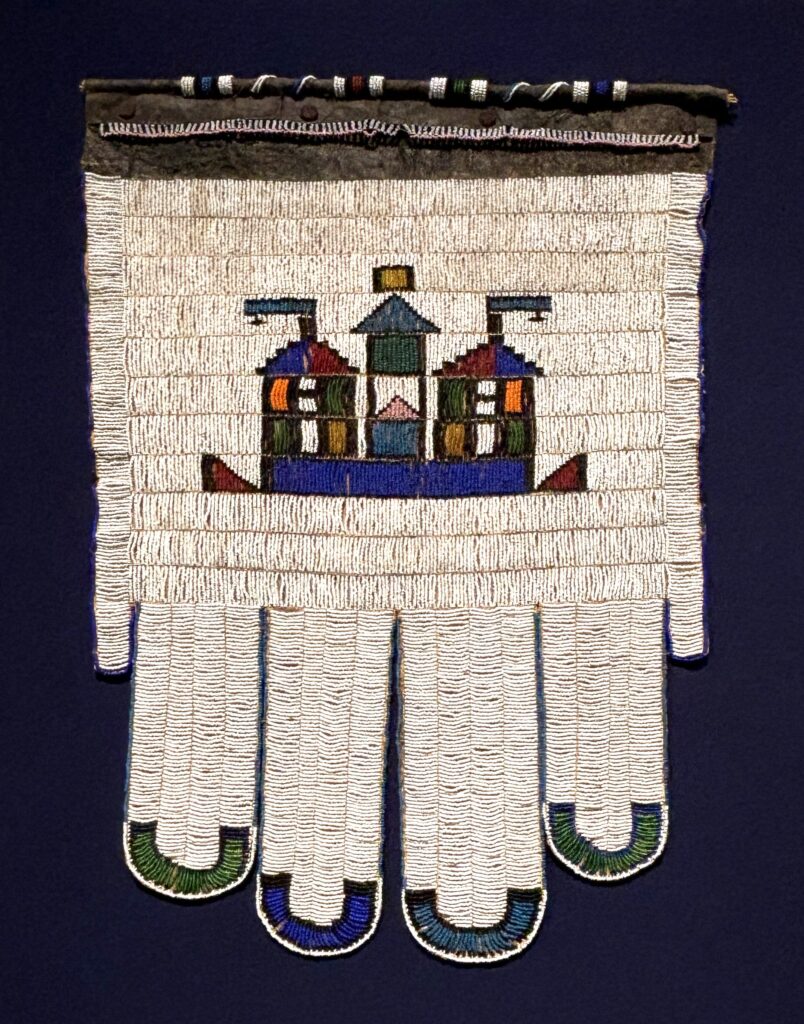Ndebele Woman’s Apron

This married woman’s apron, known as itjorholo, is from the Southern Ndebele people, who are part of the Bantu ethnolinguistic group. The Southern Ndebele live primarily in the Limpopo and Mpumalanga provinces in northeast South Africa.
Ndebele women and girls wear a series of different beaded aprons that change with each new stage of life. Girls wear aprons known as lighabi until they reach puberty and go through initiation. After initiation, during adolescence, girls wear isephephetu. At the wedding ceremony, the bride wears a style called liphotu. Upon marriage, the bridegroom gives his new wife a plain leather apron which is the starting point of the itjorholo apron shown here. The woman then embroiders the apron in a bold design using glass beads and wears it once she gives birth to her first child. The panels at the bottom represent the children she will have.
Beading is an important part of traditional Ndebele female clothing, and the skill is passed down from mother to daughter. Ndebele women are also known for their artistry in painting brightly colored geometric shapes on their houses. The design on this apron clearly illustrates that tradition, emphasizing the importance of home and family.
This apron is currently on loan to the Gregg Museum of Art and Design at NC State University in Raleigh, NC. It is featured in the exhibit Material Messages: The Tales That Textiles Tell through January 25, 2025.
Other objects from South Africa that have been featured for Artifact of the Month include love letter beads, a medicine horn, and a beer pot.

